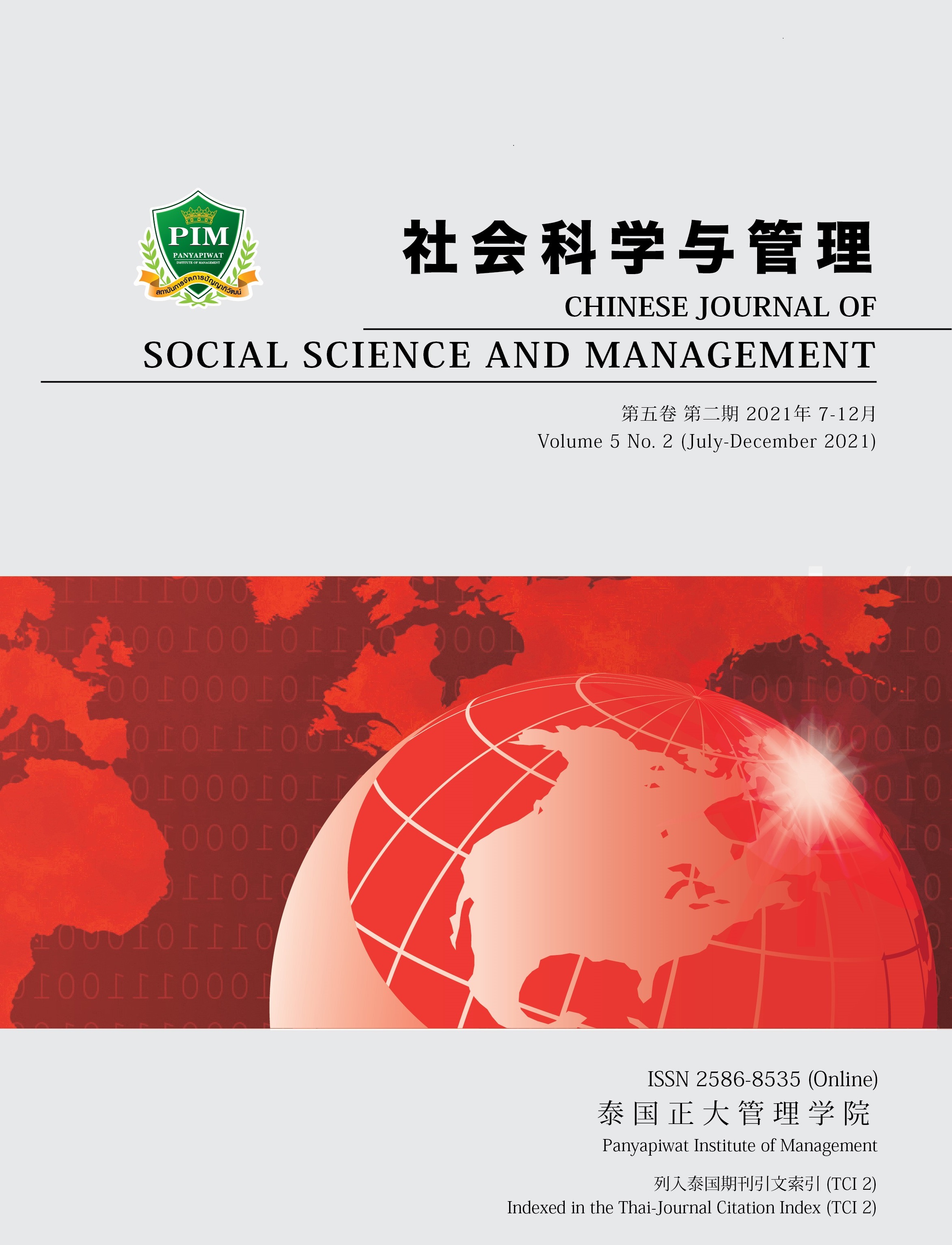关于汉语水平考试 (HSK) 1-6级语料库中 “ 对” 字含义的研究
##plugins.themes.bootstrap3.article.main##
摘要
汉语中一字多义的字不少,其中一个比较常用的是 “对” 字。本文根据五本汉语词典 收集 “对” 字的含义,总共有十九个。
汉语水平考试 (HSK) 被泰国和国外的各个单位公认。因为凭汉语水平考试 (HSK) 成绩 能应聘或者申请学习更高的汉语专业,所以不少学汉语的学生都希望能够通过汉语水平考试(HSK) 并取得好成绩。本文在汉语水平考试 (HSK) 1-6 级语料库中搜索 “对” 字的含义,并与五本 汉语词典收集到的含义进行对比与分析。结果搜索到十九个含义,分成六个级别,第一级别搜索 到一个含义,第二级别搜索到三个含义,第三级别搜索到三个含义,第四级别搜索到五个含义, 第五级别搜索到七个含义和最后第六级别搜索到十个含义。除此之外,本文还提供汉语水平 考试 (HSK) 的考试成功策略。
##plugins.themes.bootstrap3.article.details##
Chinese Journal of Social Science and Management Editorial Division
The Office of Research and Development, Panyapiwat Institute of Management
85/1 Moo 2, Chaengwattana Rd., Bang Talat, Pakkred, Nonthaburi 11120, Thailand
Tel. 02 855 01048 E-mail: cjssm@pim.ac.th
参考
Hankao International Education Technology [Beijing]. (2012). Vocabulary of new Chinese Proficiency Test (HSK)(2012 Revision). Retrieved March 30, 2021, from
Huanarom, Y. (2016). A Study of Chinese Proficiency Test (HSK) of Chinese Business Program Students at Dhurakij Pundit University (Research Report). Dhurakij Pundit University. [in Thai]
Jaiboon, C. (2016). Chinese Vocabulary Memory strategy and Chinese Vocabulary Teaching Method In Dhurakij Pundit University National Conference (pp.29-40). Bangkok: Dhurakij Pundit University. [in Thai]
Kaewyod, W. (2020). The Analysis of HSK Vocabulary in Chinese Textbooks for students in the Chinese Program, Faculty of Humanities and Social Sciences, Ubon Ratchathani Rajabhat University. Humanities and Social Sciences Journal, Ubon Ratchathani Rajabhat University, 11(2), 134-150. [in Thai]
Li, S. C. (2020a). Research on Semantic Derivation from the Perspective of Frame Semantics: Taking the Polysemy “Kan” as an Example. Journal of Northeast Normal University (Philosophy and Social Sciences), 1(303), 20-25. [in Chinese]
Li, Y. H. (2020b). The Constrcction of Polysemoee Semantic Networks from Cognitive Perspective: Take Fā (发) as an Example. Journal of Jiangsu Vocational and Technical Institute of Economics and Commerce, 1, 43-47. [in Chinese]
Liu, C. P., & Pan, X. J. (2008). A Learner’s Chinese Dictionary: Illustrations of The Usages. Beijing: Beijing Language and Culture University Press. [in Chinese]
Prawan, N. (2019). The Chinese-Thai Dictionary of Common Words. Bangkok: Phetpraguy Press. [in Thai]
Ruangjarernlap, S., & Sangkla, W. (2018). An Error Analysis of Thai Students in using Prepositions “dui”, “duiyu”, “guanyu” A Case Study of Thai Students in Sichuan University. In SPUC National and International Conference, (pp. 408-413). Chonburi: Sripatum University. [in Thai]
Siriphan, R. (2020). Error analysis of “Chao”, “Dui”, and “Xiang” for Faculty of Liberal Art students, Princess of Naradhiwas University. Princess of Naradhiwas University Journal of Humanities and Social Sciences, 7(2), 156-173. [in Thai]
Thanajirawat, Z., Suesor, S., & Jirapatwarakul, N. (2019). Using, Attitude and Language Change of Tie Chew language in Thailand (Research Report). Rajamangala University of Technology Rattanakosin. [in Thai]
Thaweethanaviriya, S., Wasinanon, S., & Liu, J. X. (2016). Strategies of Success on the New HSK Level 4. Research and Development Institute, 10(2), 123-135. [in Thai]
Wang, Y. F., & Liu, X. J. (2011). Views on Compiling the Teaching Material of Regionalized Chinese as a Foreign Language: Taking Thai Studying Chinese Language for an Example. Journal of Hezhou University, 27(3), 50-52. [in Chinese]
Xin, H. (2016). Study on the Errors of HSK Test Vocabulary for Foreign Students in Chinese Acquisition and Teaching Suggestions Research on “Temporary” as an Example. Journal of Mudanjiang University, 25(9), 16-18. [in Chinese]
Xu, L., & Yao, X. S. (2010). 800 Chinese Characters. Beijing: Foreign Language Teaching and Research Press. [in Thai]
Xu, Y. Y. (2009). On Difficulties for Thai Students to Learn Chinese Pinyin and Teaching Methods. Journal of Guangxi Teachers Education University (Social Science Edition), 30(3), 139-142. [in Chinese]
Xu, Y. M. (2006). Contemporary Chinese Learner’s Dictionary. Beijing: Beijing Language University. [in Chinese]
Yamwong, N. (2019). An Analysis of the Meaning of the word打(dǎ) in Chinese for Teaching Foreign Students. Journal of Sinology Mae Fah Luang University, 13, 76-98. [in Thai]
Yang, H. C. (2016). Modern Chinese-Thai Dictionary. Bangkok: Ruamsan. [in Thai]


